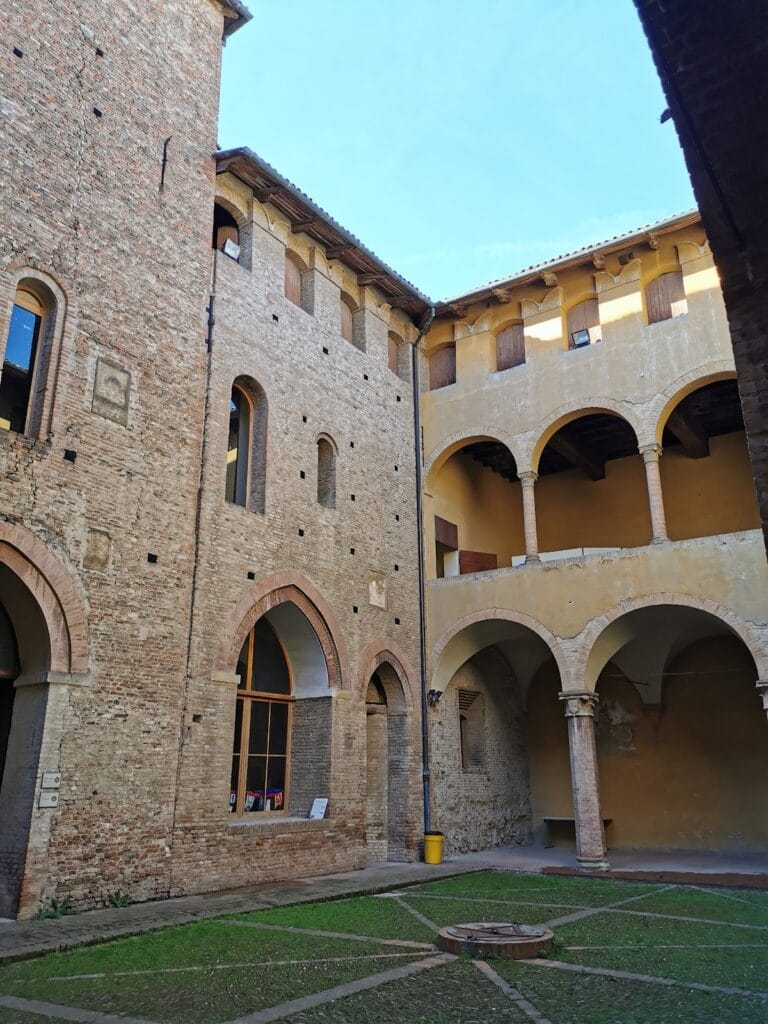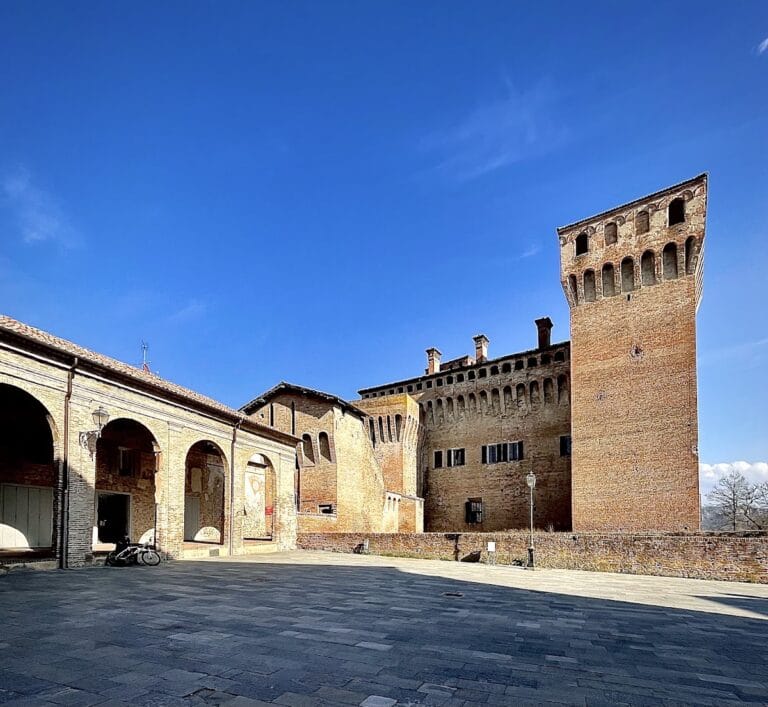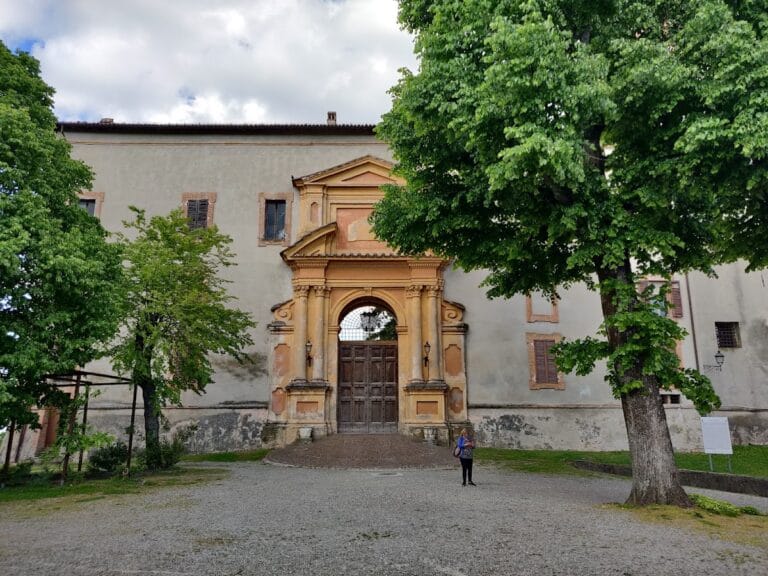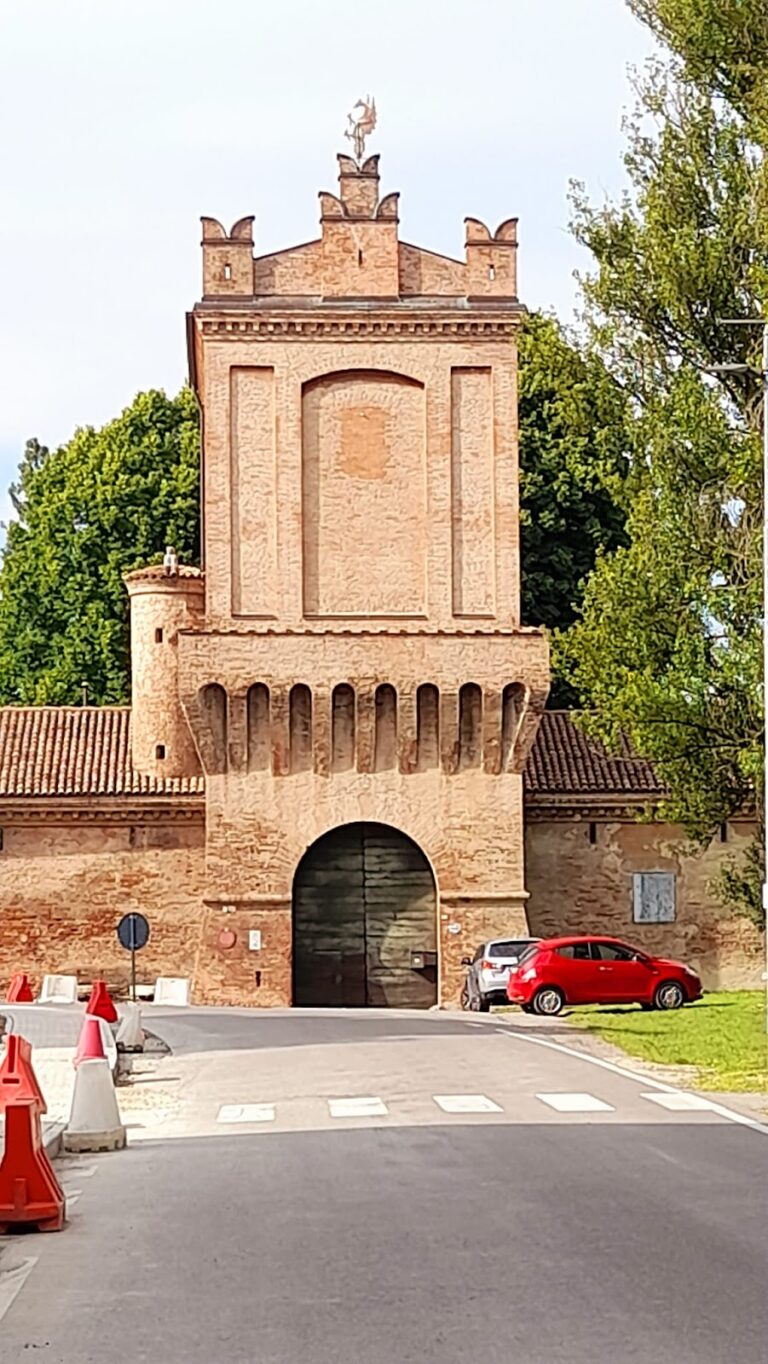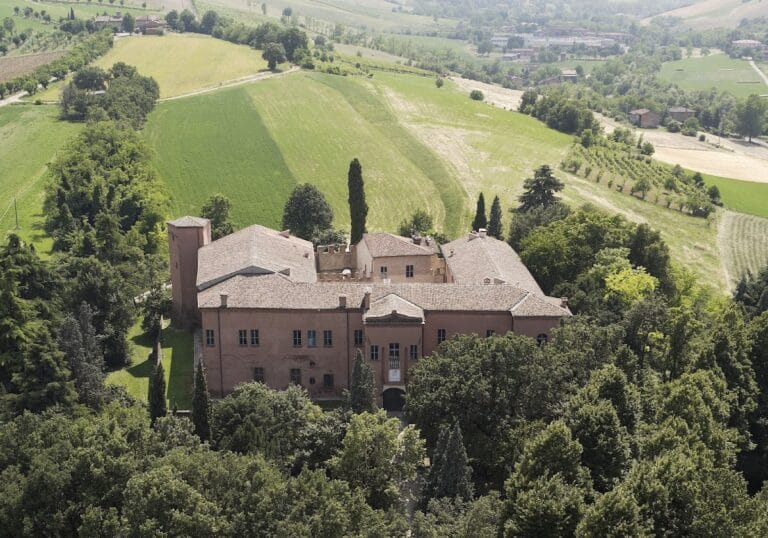Rocca dei Bentivoglio: A Historic Fortress and Noble Residence in Bazzano, Italy
Visitor Information
Google Rating: 4.5
Popularity: Low
Google Maps: View on Google Maps
Official Website: www.frb.valsamoggia.bo.it
Country: Italy
Civilization: Medieval European
Remains: Military
History
The Rocca dei Bentivoglio stands in the town of Bazzano in Italy and was initially constructed by medieval communities seeking fortified strongholds. Its origins trace back before the early 11th century, when it was first mentioned in documents dating to 1019 as a fortified castle, part of the widespread medieval effort called incastellamento, which involved building defensive settlements throughout the region.
In 1038, the Bishop of Modena granted the lordship of Bazzano to Margrave Boniface of Canossa, an influential noble of the time. After Matilda of Canossa’s death in 1115, control of the castle returned to the Bishop of Modena, triggering territorial conflicts with the nearby city of Bologna. During the 13th century, Bologna made attempts to capture the castle, failing first in 1228 but succeeding in 1247. Following their conquest, the original fortifications were dismantled in 1250, and the stones were repurposed for construction in the neighboring area of Monteveglio.
The castle underwent a major rebuilding phase between 1296 and 1317, directed by Margrave Azzo VIII d’Este of Ferrara. This transformation resulted in a fortified military structure complete with towers, walls, and two donjons, one of which was replaced by the current clock tower in 1317. By around 1301 to 1310, the Bolognese completed these modifications. Throughout the 14th and early 15th centuries, control of the castle shifted multiple times, passing among the Bolognese authorities, the Visconti rulers from Milan, and representatives of the Papal States, reflecting the turbulent politics of the region.
In 1473, Giovanni II Bentivoglio, lord of Bologna, acquired the fortress and reshaped it into a noble residence rather than a purely military fortress. Renovations were finished by 1490, and the Bentivoglio family used the castle as a “delizia,” or pleasure residence, hosting festivities and social occasions until their expulsion in 1506. Two years later, in 1508, the fortress was converted into the seat of one of Bologna’s three “Capitanati di Montagna,” a mountain district that included civil and criminal courts, administrative offices, prison facilities, and housing for officials and armorers.
The castle’s jail gained historical note in 1799 when the writer Ugo Foscolo was imprisoned there after being captured by Austrian forces. His cell remains a known feature within the building to this day. In the 19th century, some of the interior spaces, such as the Sala dei Giganti (Hall of the Giants), were adapted for new uses including theatrical performances. In 1873, the castle took on a museum function with the establishment of the Arsenio Crespellani Civic Archaeological Museum, displaying finds from the surrounding area dating from prehistoric times through the Renaissance. Since 2024, the Rocca dei Bentivoglio also serves as the endpoint of the Via dei Brentatori, a cultural route celebrating local history.
Remains
The Rocca dei Bentivoglio today preserves a mixture of medieval and Renaissance architectural elements arranged around a central courtyard. The oldest part faces the inner courtyard on the south side and consists of two brick buildings from the late 13th century: a tower and an adjoining structure. These reveal features of the Bolognese Gothic style, including double pointed arch doors and vaulted ceilings supported by intersecting ribs, characteristic of their era.
A notable stone embedded in the tower’s façade marks the castle’s first military outfitting, dating to around 1301. By 1304, the defensive walls were finished, and two donjons—the larger fortified towers typical of medieval castles—were added by approximately 1310. One donjon near the entrance gate was later converted in 1317 into the present clock tower, which remains a distinctive landmark. The castle’s main entrance displays a double-arched portal with a “pincer” or tenaglia structure designed as a military trap to hinder invaders.
During Bentivoglio ownership, the fortress was transformed into a grand two-story noble residence organized in a square around a central courtyard. The courtyard contains a well connected to an underground cistern, ensuring water supply. The ground floor originally housed functional spaces such as kitchens, cellars, storage areas, and living quarters for servants. Above, the piano nobile accommodated reception halls and private apartments for the lord and his family.
The castle’s exterior features walls left unplastered, revealing the mixed masonry of bricks and pebbles arranged in alternating layers, a technique typical of Bentivoglio renovations. Above the entrance, vertical slots attest to a former drawbridge, no longer present, as does the dry moat that once enclosed the fortress. Traces of this moat survive today as a depression on the west side and as vertical recesses near the entrance. A drawing from 1585 confirms the existence of the moat, drawbridge, and Bentivoglio stables located to the west of the castle.
Inside, several rooms preserve decorative wall paintings from the Renaissance era, including coats of arms bearing the Bentivoglio emblem—a red seven-toothed saw surrounded by a vegetal wreath—often accompanied by the initials “Ms” and “Zo” referencing Messer Zoane (Giovanni II Bentivoglio). Ceilings combine heraldic symbols of the Bentivoglio family with those of the Visconti and Sforza, signifying marriage alliances.
The Sala dei Giganti contains late 15th-century frescoes portraying the Bentivoglio estates alongside monumental armored warriors framed by architectural elements. Recent restorations have revealed corrections and peculiar details in the artwork, such as warriors bearing different shields and one figure depicted with three legs. These frescoes likely celebrate the marriage between Giovanni II Bentivoglio’s son Alessandro and Isabella Sforza, visually representing the union of their families.
Adjoining this hall is the Sala del Camino (Fireplace Hall), used as a dining area and decorated with repeated heraldic motifs combining Bentivoglio and Sforza imagery, including a pearl necklace and a four-lobed design. Another richly painted room, the Sala dei Ghepardi (Cheetah Hall), features tapestry-style frescoes showcasing a cheetah clutching a cartouche that displays the motto “Per amore tuto ben volgo sofferire,” a cryptic phrase linked to the Bentivoglio name, framed by a wreath of pomegranates symbolizing prosperity.
The Sala delle Ghirlande (Garland Hall) is notable for its walls adorned with vegetal garlands creating diamond shapes that enclose a quartered coat of arms. This heraldry combines the golden rampant lion with a quince, representing the Sforza of Cotignola, and the seven-toothed saw of the Bentivoglio family. The lion’s prominence highlights Ginevra Sforza’s significance; this chamber served as her bedroom and includes a niche likely used for personal belongings. The painted cornice here bears the initials “MA” and “ZA,” referring to Madonna Zinevra and Giovanni II Bentivoglio.
Some interior walls, such as those in the room housing materials from the Casini well, underwent repainting during restorations in the 1930s, preserving only fragments of the original frescoes. Early 20th-century additions include a charcoal drawing in Futurist style depicting a mechanical centaur. Removal of fascist emblems like Prussian military insignia and an eagle with slogans has also taken place.
Today, the castle functions as home to the Arsenio Crespellani Civic Archaeological Museum, alongside spaces for cultural events, a music center, an intermunicipal media library, and the “Tommaso Casini” study center, thereby continuing its long history as a place of community and learning.



